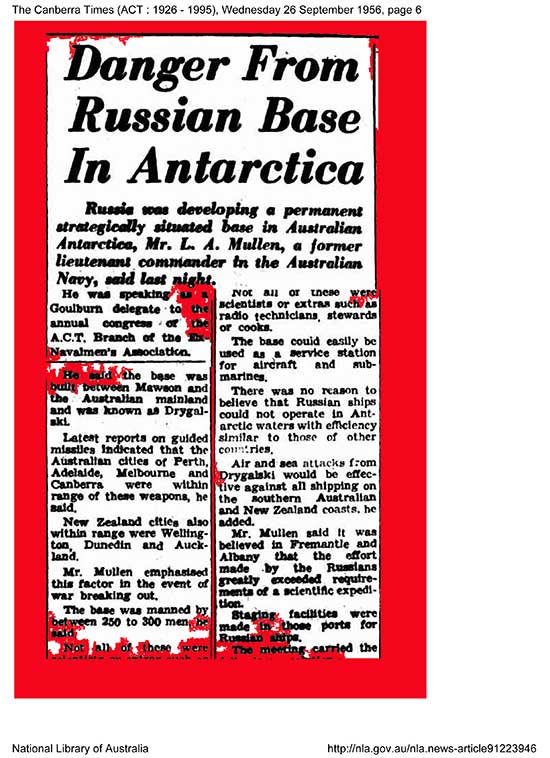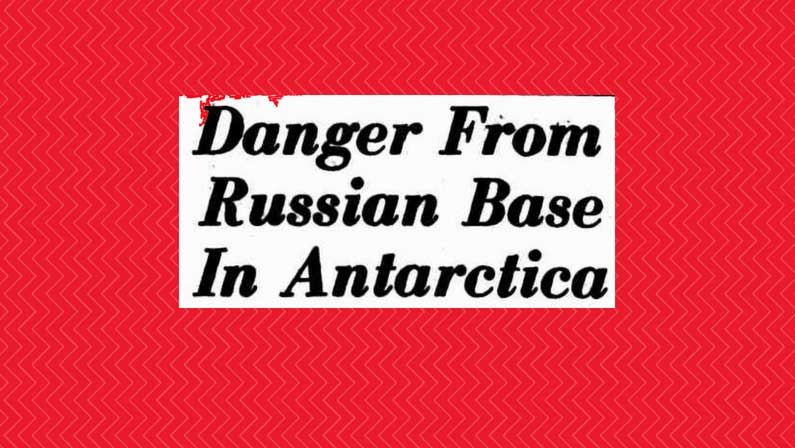Okay, so things get a bit wobbly in Antarctica in September, but that no reason for the folks at home to lose their nerve, is it? Is it… Well, back at home the cold war broke out again …
It might be a good idea to remind you why so many nations had set up bases in Antarctica in 1955-1956.
- A 1952 proposal for an “International Polar Year” gathered momentum and the International Geophysical Year (IGY) was the outcome.
- From July 1957 to December 1958, eleven countries funded scientific teams for Antarctic exploration.
- South Africa became the twelfth country to participate, but its involvement in the IGY was restricted to meteorological and oceanographic investigations using ships and aircraft.
- Scientists drawn from sixty-seven different nations cooperated in studies of the earth’s gravitational field and Antarctica’s meteorology, geophysics, geodesy, cosmic ray, and ionospheric physics, glaciology, oceanography, and seismology.
- In 1955 Soviet personnel, ships, and planes set up Mirnyy (“peaceful”) Station in Australian Antarctic Territory.
- The Australian Director of Antarctic Division greeted them as a Godsend: “once the Russians came into Australian territory, my fight for finance was over because the Cold War was on and the government realised they had to neutralise the Russian presence with an Australian presence.”This was the height of the cold war but even though the world was immersed in the catty diplomacy of the cold war, but this model of global cooperation unfolded from a thousand packing crates with feline grace.
In Antarctica, the Australians and Russians got along very well. The Australians had been greeted warmly by the Russians at Mirrny on their way to Mawson and a series of reciprocated visits would take place over the years. The Russians would always be welcomed at Mawson and the Australians would always enjoy their visits to Russian bases.
But Mirrny was right in the middle of Australian Antarctica (it still is) and there has always been deep disquiet about that amongst some levels of political leadership in Australia.
Many of the nations involved in the IGY research indicated early that they would stay in Antarctica only for a couple of years. The Americans, for example, handed Wilkes station established by the United States in 1957-58 over to handed to Australia in 1959. In 1964 that base became a rubbish dump and the Australian base moved to nearby Casey station.
In September 1956, as Syd and his colleagues emerged from the dark winter, there were dark mutterings in Australia that the Russians might not to home after the IGY.
So a storm of disquiet fluttered through the Australian press and then was forgotten. As September’s dark blended into October’s light, the mini cold war was forgotten and the polyarniks in Antarctica began to plan their excursions into the great unknown frozen wilderness beyond the coastline.

The Canberra Times (ACT : 1926 – 1995), Wednesday 26 September 1
